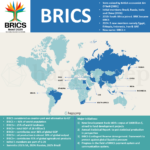Conjunctions in English
Conjunctions in English
Introduction
Conjunctions are essential words in English grammar. They help us connect words, phrases, and sentences smoothly. Without conjunctions, our speech and writing would sound choppy and disconnected. Conjunctions are bridge words that help connect thoughts logically.
For example:
- I like apples. I like bananas. (Choppy)
- I like apples and bananas. (Smooth with “and”)
What is a Conjunction?
A conjunction is a word that joins two or more words, phrases, or clauses in a sentence.
Examples of Conjunctions in Sentences:
- I like tea and coffee.
- She was tired, but she kept working.
- You can go out if you finish your homework.
Types of Conjunctions
Coordinating Conjunctions
These conjunctions join words, phrases, or independent clauses that are of equal importance in a sentence.
Common Coordinating Conjunctions:
- For, And, Nor, But, Or, Yet, So
Examples in Sentences:
- She likes coffee, but he prefers tea.
- I wanted to go outside, so I took my umbrella.
- He is smart and hardworking.
Subordinating Conjunctions
These conjunctions join a dependent clause to an independent clause. They show time, cause, contrast, condition, or reason.
Common Subordinating Conjunctions:
- Time: Before, After, When, While, Until, Since
- Cause & Effect: Because, As, Since, So that
- Condition: If, Unless, Provided that, In case
- Contrast: Although, Though, Even though, Whereas
Examples in Sentences:
- Because it was raining, we stayed inside.
- I will call you when I reach home.
- She kept running until she got tired.
- He studied hard so that he could pass the exam.
Correlative Conjunctions
These are pairs of conjunctions that work together to connect two equal parts of a sentence.
Common Correlative Conjunctions:
- Both…and
- Either…or
- Neither…nor
- Not only…but also
- Whether…or
Examples in Sentences:
- Both my brother and I love cricket.
- You can have either tea or coffee.
- Neither she nor her friends were at home.
- He is not only intelligent but also hardworking.
- I don’t know whether to stay or leave.
Conjunctive Adverbs (Linking Adverbs)
Although not traditional conjunctions, conjunctive adverbs function like conjunctions by connecting two independent clauses and showing relationships such as cause, contrast, or sequence.
Common Conjunctive Adverbs:
- Cause & Effect: Therefore, Consequently, As a result, Hence
- Contrast: However, Nevertheless, On the other hand, Still
- Addition: Moreover, Furthermore, Besides, In addition
- Sequence: Then, Next, Subsequently, Thereafter
Examples in Sentences:
- He was late; therefore, he missed the meeting.
- She studied hard; however, she didn’t pass the exam.
- The weather is cold; nevertheless, they went outside.
Always use a semicolon (;) before a conjunctive adverb when connecting two independent clauses.
Incorrect: I like pizza, however I don’t eat it often.
Correct: I like pizza; however, I don’t eat it often. (“However” is an adverb, not a conjunction.)
Summary
Type | Function | Examples |
Coordinating Conjunctions | Connect equal words, phrases, or clauses | For, And, Nor, But, Or, Yet, So |
Subordinating Conjunctions | Connect dependent and independent clauses | Because, Although, Since, Until, If, While |
Correlative Conjunctions | Work in pairs to connect sentence parts | Both…and, Either…or, Neither…nor, Not only…but also |
Conjunctive Adverbs | Link independent clauses and show relationships | However, Therefore, Moreover, Nevertheless, Hence |
Quick Links
Want to read some more articles?
-
 Shanghai Cooperation Organization (SCO): Origin, Members, Facts, etc for UPSC and other exams
Shanghai Cooperation Organization (SCO): Origin, Members, Facts, etc for UPSC and other exams -
 BRICS: Origin, members and others for UPSC, PSC & other exams
BRICS: Origin, members and others for UPSC, PSC & other exams -
 BIMSTEC for UPSC: Origin, Members & More
BIMSTEC for UPSC: Origin, Members & More -
 General Science for Competitive exams: UPSC, PSC, APFC, EO-AO, SSC, etc
General Science for Competitive exams: UPSC, PSC, APFC, EO-AO, SSC, etc -
 THE TRADE UNIONS ACT, 1926 for UPSC EPFO APFC/EO-AO, ALC, and Other exams
THE TRADE UNIONS ACT, 1926 for UPSC EPFO APFC/EO-AO, ALC, and Other exams -
 Understanding Macroenvironment: Marketing Environment in Principles of Marketing
Understanding Macroenvironment: Marketing Environment in Principles of Marketing -
 Understanding Microenvironment: Marketing Environment in Principles of Marketing
Understanding Microenvironment: Marketing Environment in Principles of Marketing -
Interjections in English
-
Conjunctions in English
Recruitment notifications update!
-
Recruitment 2025: Recruitment for Teaching Staff in The School of Planning and Architecture, New Delhi - Vacancy, Posts, Grade Pay, etc
-
Recruitment 2025: Vacancies in Inter-University Centre for Astronomy and Astrophysics (IUCAA)
-
Recruitment 2025: Recruitment on Deputation basis in National Anti Doping Agency (NADA)
-
Recruitment 2025: Various vacancies in Artificial Limbs Manufacturing Corporation of India (ALIMCO)
-
Recruitment 2025: Various vacancies in Land Ports Authority of India
Copyright© 2024 | All rights reserved | Made in India